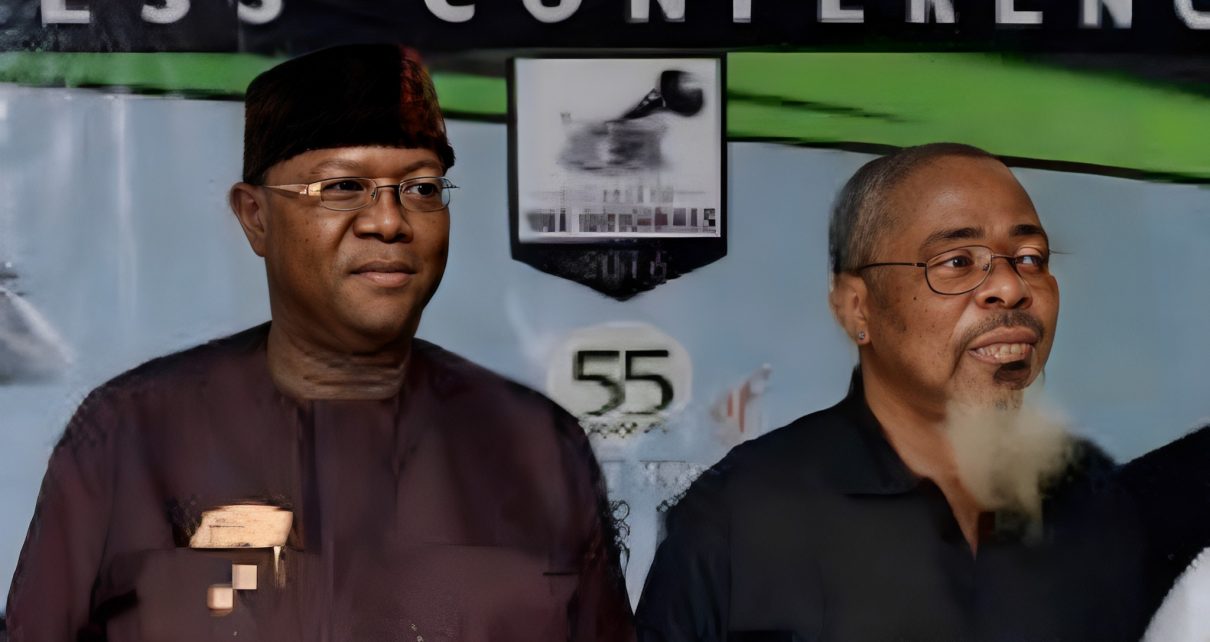
Music preservation is an act of preserving and maintaining art found throughout the ages be it sculpture, paintings, books, etc.
Most people who are preservationists usually first start as collectors. A good example is a renowned music collector in Nigeria, Mr Femi Esho, Chairman of Evergreen Musical Company who owns the largest collection of music of yesteryears in Nigeria and Omoba Yemisi Shyllon founder of OYASAF who has the largest work of art in Nigeria today and whose Museum is situated at Pan Atlantic University, Lagos.
Femi Esho started his collection of musical works at the age of twelve. It started as a passion and love for music. His passion took him around Nigeria and he moved with the biggest names in Nigeria music industry. Today he is acclaimed as the largest collector of music of yesteryears in Nigeria with over 100,000 original pieces of vinyl of the works of musicians from all over the world particularly those in Africa. Also, his Lagos office has over time become a beehive of activities where researchers, musicians, students, etc all come to learn about Nigerian Music Heritage. In his Lagos office are the original works of most Nigerian musicians some of whom he owns the copyright to their works also on display in his heritage Office are musical instruments like the Gramophone of 100 years, Reel to Reel, Turntable, etc.
It is good to know that collectors over time become preservationists as they think deeply about ways to safeguard most of their collected works for posterity. Sometimes they are seen as performing a surgical operation on the piece of music/ art in their custody. I remember a few years back while discussing with Mr Femi Esho, my dad. He told me of a most painful experience he has had as a collector. I am sure you will also laugh when you hear this story. He said while sorting out his many collections one of the 78rpm record plates fell and broke into pieces, Guess what!! He said that tears rolled down from his eyes. One may wonder why the such a display of emotions but for him, he believes he has lost his heritage and an entire musical work that may never be found again.
Now back to the focus of the day. In explaining the preservation of our music I will love to split this topic into 3
- Music Storage Materials and how it has been improved on over the years
- The Future
- Need for the preservation of our Musical Heritage.
Storage System
In explaining musical storage device and how it has been improved on over the years we will start by tracing back to over 3,400 years ago when the first musical form was discovered in Syria during the excavation process. The archaeological finding was a hymn inscribed on a clay tablet. This has since been transcribed and put into song. We can find that song on YouTube.
While discussing this mention must be made of the earliest musical instruments like the Iyre which is from 1400 BC and the Neanderthal flute which has been estimated as over 60,000 years.
Coming back to Nigeria historical Research confirms Canon Jesse Ransome Kuti, Fela Kuti’s grandfather’s songs as the first to be released in Nigeria on Vinyl in the year 1925 under the Zonophone record label. In understanding Zonophone please note it was not really a company per se but it name applied to records and machines (Talking Machines). Years ago people always thought it was the dog on the gramophone that sang. The technology of the Gramophone was introduced in, 1887. The Gramophone was used to play what was known as the 78rmp plate and also known as breakable plates. In 1920 the reel-to-reel was introduced. Later in 1948 technology continued to improve hence the introduction of 33 RPM records from Colombia Records. Then we had a turntable to play this. In 1958 the Cassette player was invented then later in 1982 the invention of CDs. For us that are collectors, I can say that the CD system has been like the poorest storage System. Once the CD scratches it loses its relevance and starts to skip during play. Sometimes the musical content can vamoose sorry with my word lol leaving the CD empty. The other devices are relatively okay and have been able to stand the test of time, especially if not exposed to heat. The MP3 Project began in 1977 but was first put into use in 1998 according to research. The digital process allowed songs from earlier mentioned storage facilities to be converted to MP3 and then stored on hard drives and computers. There is a reservation for the digital era because in a bid for the preservation of the original works as old as 100 years some end up losing the original sound texture including original local musical instruments used in the production while trying to eradicate noise and scratches. There is no gainsaying that the digital age has helped musicians particularly contemporary ones in selling their music around the world unlike the sale of vinyl and cassettes which required face-to-face purchases. Now, artists, can connect to their fans easily through streaming their works on different platforms online like Amazon, iTunes, Boomplay, etc
The Future
Global Music Vault is trying new technology that will help keep music for 10,000 years on a platter stem technology from a Microsoft research project dubbed project silica which uses recent discoveries in ultrafast laser optics according to them the glass is capable of holding over 20,000 songs for around 10,000 years.
Need for Preservation of our Musical Heritage
There is a need to preserve our musical heritage to avoid distortion of original lyrics. The unavailability of our music will cause young minds to embrace foreign cultures that are available. We learn about our cultures through music and allowing its extinction is to our own detriment. We all have noticed that contemporary music nourishes itself from older music traditions many of us will notice in the song’s remix of the present age. The loss of our musical heritage will mean the loss of our unique stories that carry mythologies, records of our ancestors, taboos, social norms, etc.
- Being a paper delivered by Bimbo Esho, at the University of Lagos on Wednesday, November 23, 2022 Bimbo Esho is the Managing Director, Evergreen Musical Company


